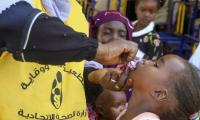LAHORE: Delay in disclosure of news led to misinformation and deprived the public and private sector planners from chalking out a timely strategy to move ahead. The large scale manufacturing figures for January released on Wednesday revealed 4.77 percent dip in its growth.
The deliberate delay in reducing the policy rates did not stop the declining trend in the rupee value that by Wednesday evening was trading at lower level than Tuesday.
Textile exports cumulatively increased 5.3 percent during the eight months (July-February) of this fiscal year, despite availability of subsidised power and energy.
The cumulative increase in food group exports during the same period was 5.8 percent. This group did not enjoy any subsidy. Another point worth noting is that the exports of yarn and fabric dipped 0.86 and 2.2 percent, respectively, during the subsidised power and energy supplied period of July-February of this fiscal year.
It should also be noted that these two subsectors of textile are the recipients of over 80 percent of the power and gas subsidies that the federal government provided to five major exporting sectors. These are all official documented statistics.
When we know that the industrial growth is constantly declining and with inflation on the downward trend for long run, it was expected that our central bank would ease the policy rates by at least two to three percent. That might have provided the private sector some hope, besides reducing the government debt servicing burden by Rs200 billion to Rs300 billion. It would have long-term positive impact on the growth that was already under severe pressure due to coronavirus pandemic.
All other economies have done so to at least buy time till the situation starts improving. Our central bank thought otherwise. For it the retention of hot money was more important. The central bank planners do not realise that if God forbid coronavirus prevails for a while there entire global trade would cave in and with that the currencies of all countries would suffer badly.
The hot money first is not going to stay in the country, and if it did, it would not be able to stop the currency downslide triggered by the virus threat.
In the same way, the planners, particularly the ministry of commerce should reconsider its subsidy policy. It is no use to waste huge subsidy on basic textiles that even after almost a year of availing subsidised tariff is still posting negative growth.
Negative growth means that the products produced by this sector are not globally competitive. This also means that the domestic value-added industry is constraint to buy its basic raw materials from an inefficient sector that makes their end products more expensive and negatively impact their export potential.
Despite the handicap of buying local yarn and fabric at marginally higher than global rates, the exports of knitwear surged 7.70 percent and readymade garments 12.63 percent.
We must bear in mind that of the Rs20 billion subsidy announced for five exporting sectors, the knitwear and readymade garment exporters got only Rs2 billion.
If the government allows free import of yarn and fabric and transfer half of the subsidy availed by the yarn and fabric sectors we might see a jump of 12 percent to 20 percent in exports of these value-added sectors.
The basic textile millers would scramble to put their house in order and upgrade their technologies to provide basic raw materials to the value-added sectors at the globally competitive rates.
A further look at the export scenario reveals that not all the exporting sectors that got subsidised power and energy, performed well, but there are some that performed exceptionally well and these again are the sectors that consume very low power and energy.
Hence, they availed nominal subsidy. These include footballs in sports goods with 12 percent increase in eight months of this fiscal year (all other subsectors of exports showed negative growth). Items manufactured from leather also showed robust growth of 11.13 percent topped by leather footwear with an increase of 12.67 percent in exports during the period under discussion.
A day after the announcement of the monetary policy the stock market continued its downward march and by the midday, the KSE-100 index shaved off over 2,000 points.
Yes, it is the corona impact, as well, but other global markets showed some stability after easing of interest rates by their central banks, while our capital market accelerated the decline due to nominal easing.
Honda officials posing for a photgraph. —APP/FileKARACHI: Honda Atlas Cars Pakistan Ltd has achieved a major...
SOS children village's children showing bags donated by Emirates International Airlines. — Emirates...
Automobiles at the shipping terminal are shown from the view of a drone in San Diego, California, US, March 26, 2025....
A representational photo of clash between police and protesters. —AFP/FileLAHORE: Pakistan’s governance crisis has...
A woman holds a smartphone displaying the logo of social network X . — AFP/FileElon Musk said his xAI artificial...
A representational image of a person using his cellphone for a digital transaction. — Unsplash/FileKARACHI: Chief...







